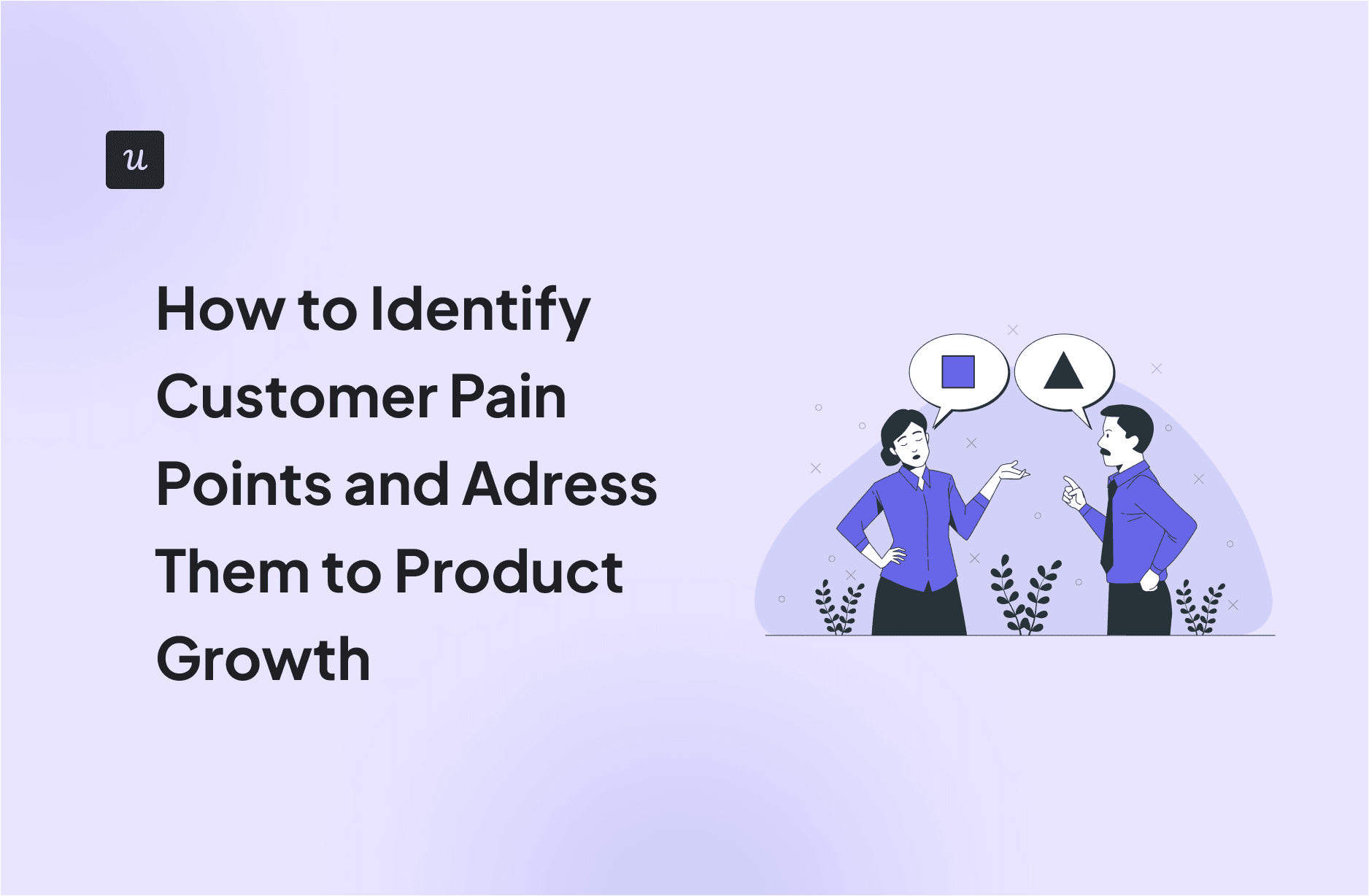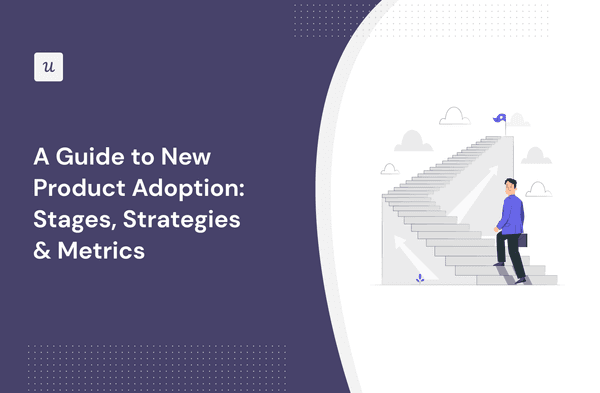
Understanding how to identify customer pain points and struggles is the cornerstone of creating a painless customer experience and a loyal customer base.
The reason is simple – struggling customers hold the key to sustained product growth.
This article explores effective methods for uncovering pain points and translating them into actionable growth strategies.
Try Userpilot Now
See Why 1,000+ Teams Choose Userpilot

What is a customer pain point?
Customer pain points refer to the frustrations, roadblocks, and unmet needs that customers experience while using your product or service.
In other words, pain points are any issues that negatively impact the customer experience and hinder their ability to achieve their desired outcome.
Types of Customer Pain Points
Customer pain points come in various shades and flavors. However, you can separate them into four main categories, which impact the customer journey differently.

Types of pain points.
Productivity pain points
These pain points directly affect the time and effort customers require to achieve their goals using your product. Productivity pain points appear as deficiencies in your product or service.
Examples include:
- Complex interfaces and workflows.
- Slow server load times.
- Underwhelming features.
- Duplicity of tools.
Financial pain points
These pain points relate to the costs of doing business with your company and the customer’s perception of your product’s value. It is anything that makes the customer believe your product is too expensive or not worth its price.
Examples include:
- Expensive subscription costs.
- Hidden fees that get attached later.
- Products needing frequent replacements.
- Poor value proposition.
Process pain points
Process pain points arise from inefficiencies within your company’s systems. They stem from your organization’s internal processes and escalate to hinder the customer journey.
Examples include:
- Lengthy customer support wait times.
- Poor internal team collaboration.
- Complicated sales processes.
Support pain points
Support pain points refer to the difficulties customers face when interacting with your customer support teams. Although they can be similar to process pain points, support pain points focus specifically on shortcomings in your team’s performance.
Examples include:
- Unknowledgeable or unhelpful support staff.
- Long resolution times.
- Poor ticket resolution rates.
- Poor communication or follow-up processes.
How to identify customer pain points
Thankfully, unearthing your customers’ pain points and frustrations is far from impossible. Indeed, there’s a treasure trove of information about your customers’ experience waiting to be found.
Here are some ways you can find them:
Collect direct customer feedback using in-app surveys
You can’t begin identifying customer pain points without asking them directly, and one way to ask them is through in-app surveys.
To be effective, your surveys should go beyond multiple-choice questions. Include open-ended questions encouraging customers to express themselves.

Once you’ve collected data, look for patterns in them. To do this, you can use specialized feedback tools that allow you to visualize feedback data with a dashboard or tag open-ended questions to identify recurring themes.

Organise face-to-face interviews
You can also get valuable customer feedback by speaking with customers one-on-one. Interviews allow you to delve deeper into customer frustrations.
Your first step here will be to identify a representative sample of your customer base. This sample should cover your product’s different user segments and, possibly, different demographics.
Understanding that time is valuable, offer incentives while inviting them for the interview.
During the interview, ask insightful, targeted questions and listen intently to their responses.

Talk to your customer support and sales team
No team interacts with your customers as much as your customer support or sales team. Where customers may sometimes struggle with articulating their problems, these teams have the expertise to do so.
You can ensure data accuracy by encouraging your sales and support teams to gather feedback during interactions. Train them to write down observations, identify recurring issues, and ask insightful questions.
Track resource center usage
The resource center is a valuable tool for helping customers through problems but can also be a source of great insights. Analyzing the resource center usage data can help you in three key ways:
- Identify knowledge gaps: If customers consistently search for terms that yield no result, you may need to update your knowledge base to cover that information. The same holds if users aren’t clicking the search results from their queries.
- Uncover areas of confusion: If a topic experiences a surge in traffic, it may indicate an issue with the related feature or function.
- Uncover confusing help articles: A help article should be easy to understand and follow. If users spend significant amounts of time on the article, it may mean they’re struggling to understand its content or follow its directions.

Monitor online reviews
Online reviews are a valuable source of customer feedback as they are most often unprompted and sincere.
By monitoring what customers are saying about your product on review platforms like G2 and Capterra, you can identify the most pressing issues in your product that frustrated customers so much they decided to share.
The next step would be to analyze the trends and common themes from these platforms to identify recurring pain points that need your attention.

Analyze the customer journey
Finally, you can also analyze the customer journey to identify areas where they struggle with your product. Look out for their behaviors, frustrations, and patterns that reveal where they face the most issues.
For example, as you analyze the customer journey, you may notice dead click or rage-click zones arising from poor code quality, inconsistent performance, or other UX issues.

How to address customer pain points
Once you’ve identified them, addressing customer pain points is crucial to ensuring your product remains attractive and useful to customers. Let’s now consider some ways you can do that.
Use customer feedback to inform your product strategy
Regular feedback collection should be a key part of your product strategy. You can collect feedback on everything from the customer experience to specific feature ratings or requests, churn motivations, etc.
Implement a feedback management system that helps you auto-deploy your survey when certain events occur. Then, as the feedback comes in, analyze survey data for trends and patterns.
If customers constantly request a feature or complain about a bug/feature, immediately work to address it. If need be, ask follow-up questions to better understand the request or complaint.
Once you address the issues customers face, make sure to close the feedback loop by communicating with them and updating them on the changes you made.

Optimize customer journeys by removing friction points
Part of the product development process involves mapping out the customer journey. Once the product is in use, though, you should check to see if that mapped journey is functioning correctly.
One way to do this is by conducting a funnel analysis to determine the conversion success rate for any funnel. Are users progressing smoothly from one step to the next? Are there any unexpected or massive drop-offs between steps?

If you notice any areas of concern, dig deeper to find the source of the problem. Perhaps a “button” isn’t functioning as it should, or the UI is too complex, without clarity on the next steps. Or, could it be a slight misunderstanding that can be corrected with a tooltip?
Whatever the source of the customer or prospect’s pain points, be sure to rectify and eliminate it.
Improve customer communication with in-app messages
In-app messaging can be a powerful tool for addressing customer pain points. You can use it to render proactive support, offer personalized communication, and improve the user experience.
For example, you can use tooltips to highlight lesser-known features or functionalities, trigger in-app messages that explain how a feature works, or trigger custom messages for different user segments.
You can also leverage customer data to identify customers who are struggling with a feature and send them tailor-made messages that address their frustrations.

By proactively addressing these pain points, in-app messages reduce the volume of customer support tickets, freeing up resources for more complex issues. They also create a smoother, more delightful user experience.
Provide helpful education so users can resolve their pain points
You can further improve the customer experience by empowering users to address any pain point they encounter.
You can do this by providing educational materials such as how-to articles, tutorial videos, FAQs, product documentation, blog posts, and more. This will enable users to solve their problems without relying on customer support.
Make these resources easily accessible within your app via a resource center or help desk so that users do not have to break their journey to search for a solution.

By investing in high-quality customer education, you build trust as a reliable resource. You also reduce customer frustration and improve engagement as users can easily tackle their problems and return to your product.
3 common pain point examples and solutions
Although a customer’s pain points may vary wildly across businesses, some common customer pain points cut across different industries and products. They include:
- Limited budget: This pain point arises when a customer considers your product or service too expensive for what they’ll be getting from it. One way to alleviate this pain is by offering a tiered pricing plan that accommodates the needs of different segments.
- Product limitations: Product bugs and other usability issues are a major source of frustration that impact the product experience. Regular data collection through surveys is key to identifying and addressing these issues. You can also invest in quality control measures and product analytics tools to identify and address pain points early on.
- Steep learning curve: This pain point arises when your product is too complicated or requires some technical knowledge. While you can’t always simplify some processes, you can provide enough support materials (demos, tutorial videos, how-to articles, etc.) to guide users. You can also invest in onboarding software to help users understand the product early.
Conclusion
By continuously identifying and addressing customer pain points, you establish a customer-centric culture in your business. This not only fosters satisfaction and loyalty but also fuels product growth.
From in-app surveys and messages to product analytics, Userpilot provides valuable tools for detecting and addressing pain points. Book a demo now to learn more!







